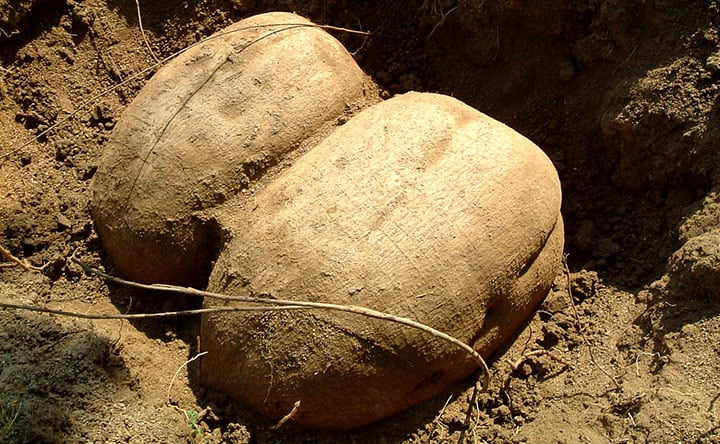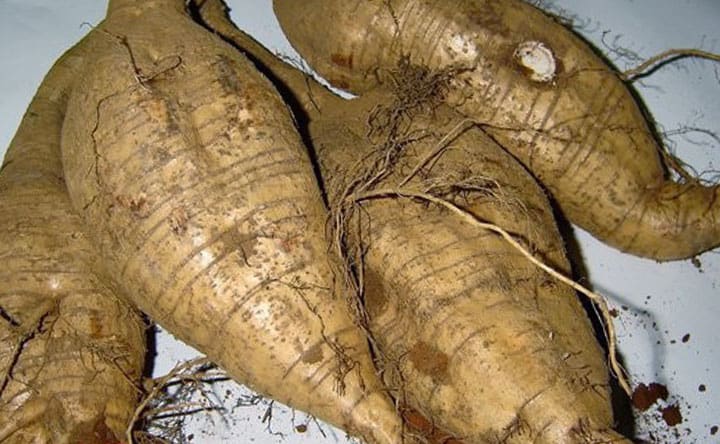What Differentiates
Pueraria Mirifica from Pueraria Lobata (Kudzu root)?
Pueraria Mirifica and Pueraria Lobata or Kudzu root sometimes can get mixed up. Although they are in the same genre, they are completely different from each other. Pueraria Mirifica is a tropical herb that originated in Thailand which is known to have highest compound than its family plant while Pueraria Lobata or Kudzu root has its own origin in China. What makes it difference is the amount of its active compound called Phytoestrogen. Pueraria Mirifica is known to possess 5-3 higher in Puerarin compound which is more effective and suitable to apply for supplementary and cosmetics.
According to an article published BMC Plant Biology volume, “Although these two plants produce similar types of isoflavones, miroestrol occurs only in Pueraria mirifica” [1]. Comparing the estrogenic potency between Pueraria mirifica and Pueraria lobata, another type of Pueraria species that predominantly originated in China, Japan and Korea, using the in vitro MCF-7 proliferation assay, Pueraria mirifica was found to have a stronger estrogenic activity [2,3]. Another study also reported to the same conclusion as “the estrogenic potency of Pueraria lobata tubers was found to be lower than that of Pueraria mirifica [4]”.
Pueraria Mirifica offers wide range of health benefits, not only it provides numerous rejuvenating properties, but also promote hormone balance for women, which contributes to breast development, healthy hair, bone and mood as well as helping alleviate menopause symptoms, such as, hot flash, vagina dryness, mood swing and so on. Meanwhile, Pueraria Lobata or Kudzu root tends to promote health benefits in other area, such as, fever, acute dysentery, diarrhoea, diabetes and cardiovascular diseases.
Comparison of Pueraria Mirifica & Pueraria Lobata (Kudzu)
Pueraria Mirifica (White Kwao Krue)

Origin from (THAILAND)
Composition of (Puerarria Mirifica):
• Miroestrol
• Deoxymiroestrol
• Four soy Isoflavones:
• Genistein, Daidzein, Daidzin, and Genistin.
• Coumestrol and Mirificoumestan, Coumestan group of Phytoestrogens.
Benefits of (Puerarria Mirifica):
• Relieves Menopausal Symptoms
• Osteoporosis Prevention
• Collagen Production
• Weight loss
• May Support Vaginal Health
• Promote Breast Enlargement
• Improves Antioxidant Activity
• May Benefit Hair Growth
• May Support Brain Health
• May Have Anticancer Effects
Pueraria Lobata (Kudzu)

Origin from (CHINA)
Composition of (Puerarria Lobota):
• Daidzein and glycosides, including Puerarin
• The other of the two soy isoflavone, Genistein
Formononetin
Glycitein
Kakkalide
Benefits of (Puerarria Lobota):
• Alcoholism
• May Relieve Headache
• May Alleviate Hangover
• May Alleviate Migraine
• May Support Cardiovascular Health
• May Exhibit Anti-bacteria effect
• May Exhibit Anti-cancer effect
• May Exhibit Antioxidant effect
Reference:
- Suntichaikamolkul, N., Tantisuwanichkul, K., Prombutara, P. et al. Transcriptome analysis of Pueraria candollei var. mirifica for gene discovery in the biosyntheses of isoflavones and miroestrol. BMC Plant Biol 19, 581 (2019).
- Cherdshewasart W, Cheewasopit W, Picha P. The differential anti-proliferation effect of white (Pueraria mirifica), red (Butea superba), and black (Mucuna collettii) Kwao Krua plants on the growth of MCF-7 cells. J Ethnopharmacol2004;93(2-3): 255-260.
- Malaivijitnond S, Chansri K, Kijkuokul P, Urasopon N, Cherdshewasart W. Using vaginal cytology to assess the estrogenic activity of phytoestrogen-rich herb. J Ethnopharmacol2006;107(3): 354-360.
- Cherdshewasart W, Sutjit W, Pulcharoen K, Chulasiri, The mutagenic and antimutagenic effects of the traditional phytoestrogen-rich herbs, Pueraria mirifica and Pueraria lobata. Braz J Med Biol Res, 2009; 2(9) 816-823.
